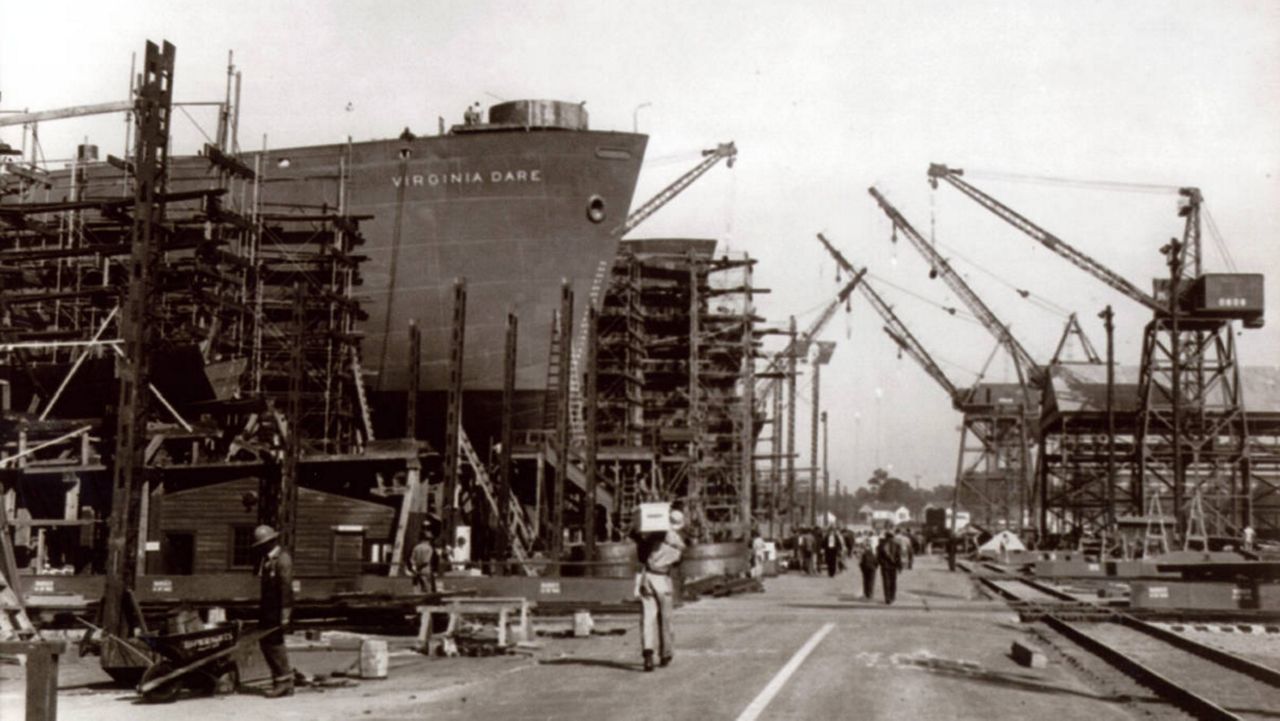German U-boats prowled the North Carolina coast. Fighter pilots in P-47s trained in the sky. Shipyards ran overtime to keep supplies moving to Europe. Wilmington turned into a “wartime boomtown” after the United States entered World War II.
The Battleship North Carolina towers over the Cape Fear River, across from Wilmington’s historic waterfront, a daily reminder of the scale of the fight on both sides of the world during the war.
On Wednesday, President Donald Trump will travel to Wilmington to declare the city a WWII Heritage City for its role in the war. Wilmington is the first city to get the heritage designation after the program was created last year.
September 2 is the 75th anniversary of the official Japanese surrender aboard the USS Missouri in 1945, according to the National WWII Museum.
North Carolina’s General Assembly in 2017 asked congress to give Wilmington recognition for its contributions to the war effort.
During the Second World War, Wilmington was officially called “The Defense Capital of the State."
“Wilmington's strategic position made it vulnerable to enemy attack by German U-boats, which marauded shipping off our beaches,” according to the General Assembly resolution.There was actually a German attack on the city in July 1943 when a U-boat fired on the Ether-Dow chemical plan in Wilmington.
The population in the city more than doubled during the war. North Carolina’s largest employer at the time was the North Carolina Shipbuilding Company of Wilmington, with 23,000 people working to build cargo ships for the war.
“Wilmington based and trained all five military services which were the predecessor to the air force at the Wilmington Airport, the Army at Camp Davis and Fort Fisher, the Navy at Fort Caswell, the Coast Guard at Wrightsville Beach, and the Marine Corps at Camp Lejeune,” the resolution notes.
The area even had three camps for German prisoners of war, according to the 2017 resolution.
“Thousands of Wilmingtonians joined the fight as Navy frogmen, P-51 fighter aces, Tuskegee Airmen, submarine skippers, bomber pilots, Marine riflemen, Army artillerymen, physicians, nurses and volunteers,” according to the city.
During the war, 248 people from New Hanover County died while serving overseas.
Wilbur Jones helped lead the effort to recognize cities for their role on the homefront during World War II.
“It’s been 12 and a half years I’ve been working on this,” said Jones, an author, military historian and retired Navy captain. He told Spectrum News 1 he hoped in 2008 to bring a president to the Battleship North Carolina to honor Wilmington’s role during the war and it’s work after to preserve its history.
Commissioned on April 9, 1941, the Battleship North Carolina was involved in every major naval offensive after Midway in the Pacific, earning 15 battle stars, according to Stacie Hidek, marketing director for the battleship
It was the most decorated U.S. battleship of the war, she said.
The president will speak from the North Carolina when he visits Wilmington Wednesday. Jones said he will be on the battleship with the president and has been given three minutes at the microphone to make a speech.
The North Carolina steamed more than 300,000 miles while she was in service, according to the ship’s history. The ship helped protect aircraft carriers in the Pacific with its anti-aircraft guns.

“Although Japanese radio announcements claimed six times that North Carolina had been sunk, she survived many close calls and near misses with one hit when a Japanese torpedo slammed into the Battleship’s hull on 15 September 1942,” according to the ship’s history.
“By war’s end, the ship lost only ten men in action and had 67 wounded,” the ship's history says.
The ship was decommissioned in June 1947 and put in reserve in New Jersey. When word came about a decade later that the Navy planned to scrap the North Carolina, a group got together to bring the ship to her namesake state.
“It was a big campaign where school children pooled their pennies, dimes and nickels” to bring the ship to North Carolina, she said, speaking from her office on the ship’s main deck.
Because of that campaign, Hidek explained, people from all over the state still feel ownership and a direct connection to the North Carolina.
The battleship came home to North Carolina in the fall of 1961. “She was dedicated on 29 April 1962 as the State’s memorial to its World War II veterans and the 11,000 North Carolinians who died during the war,” according to the ship’s history.
The ship still is open for tours but with restrictions to help stop the spread of the coronavirus. The battleship museum is getting ready to celebrate the North Carolina’s 80th birthday next year.




